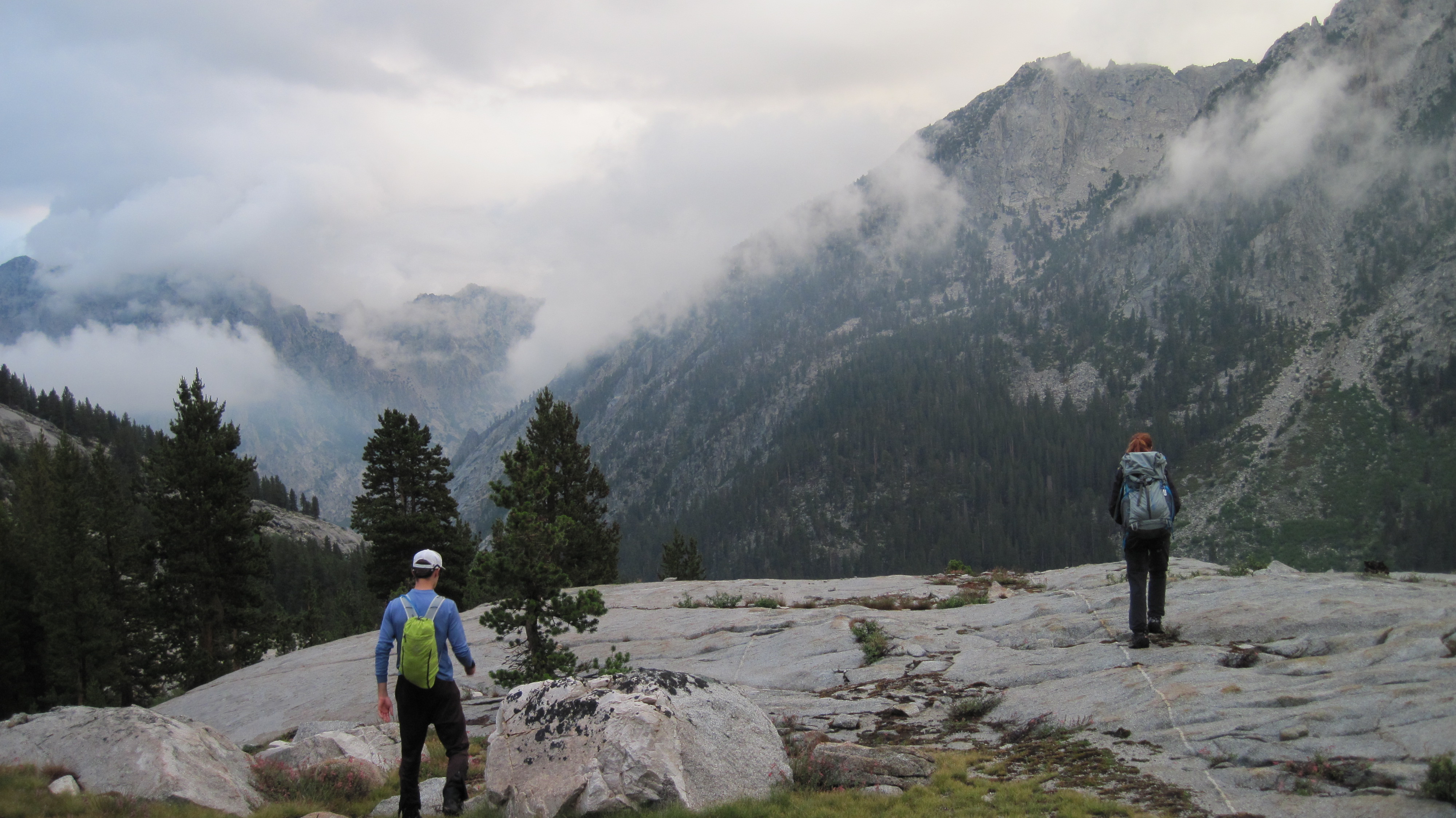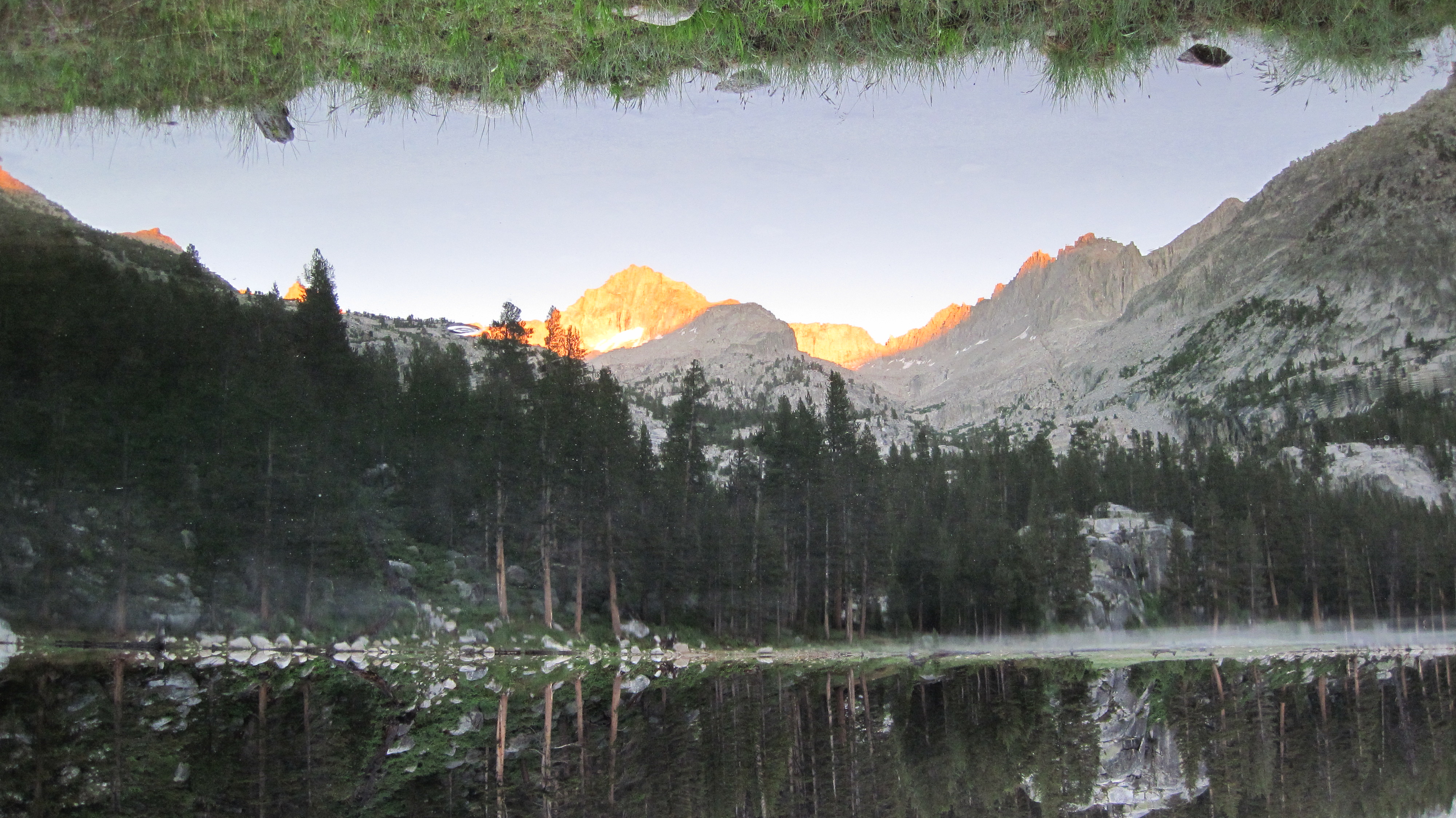Mt Brewer
11 July 2015
![Mt Brewer rescue party [photo by Mark]](http://bellokonthemoon.com/wp-content/uploads/2016/04/P1060835.jpg)
Eric has already done such a nice job writing this one up, I’ll point you over his way:
I don’t have a whole lot more to say but I definitely learned a thing or two on this one. We had planned a very ambitious day for Saturday, carrying overnight packs with the intent of climbing Mt Brewer from the Kearsarge Pass trailhead. You know when you avoid disaster and say to yourself, ‘Wow thank goodness that didn’t happen, or we would have been screwed!’ Well this was the time when shit aligned in all the wrong ways. And the truth is our friend spent a cold-ass stormy night by himself with minimal gear at or above treeline on a deep deep mountain. People have gotten hurt or worse under such circumstances.

I have become accustomed to hiking alone deep in the Sierra and on this trip a couple things caught me without my rain pants so to speak. First and foremost is the need for a hiking team to set boundaries, or decision-making guidelines regarding conditions that may arise during a hike. Setting rules and guidelines might be the last thing you want to do now that you’ve finally got away from work for the weekend, but it will make all the difference when you’re faced with the unexpected. Paramount to the success of such a philosophy is the ability to adapt to changing conditions during the hike. This is evidenced in some of the questions I wish we would have addressed during our siege of Mt Brewer.
What should we do if someone in the group wants to hike more quickly, or take more breaks? Is it acceptable for us to split up? Is everyone truly capable of navigating on their own or within a smaller subset of our group?
What is our turnaround time? Are we capable of and comfortable with navigating in the dark?
What is our shelter situation? Are we prepared for an unexpected night out? Does everyone have adequate shelters if the weather deteriorates?
Is it appropriate for everyone to carry the same amount of gear? Can we safely spread higher loads to stronger hikers?
Under what weather conditions are we uncomfortable proceeding towards the summit? Rain? Fog? High winds? Plummeting temperatures? A ‘hellish mixture of rain, snow, and hail’ combined with strong electrical currents?…
On a solo outing the prospect of total annihilation demands extreme awareness; elevated consciousness. Indeed it is this state of mind that makes being alone in the mountains so special. However unchecked these instincts will become dangerously subdued under the warm blanket that is hiking with a group of your best friends. I like hiking with my friends and a moment like this one is too much to leave to chance:
After hanging out on the summit for roughly 45 minutes (waiting for John and celebrating a good hike), Craig, Dagmar, Eric, and I began descending the peak. The weather was not improving and daylight was getting short. To our great surprise we ran into John just above the notch marking the intersection of the East Ridge and the final summit blocks. He had kept on. We exchanged pleasantries and encouraged John on his way to the top. We gave him a few directions and continued on our way. We were both in a rush: John toward the summit and ourselves toward camp. I thought to myself that John would quickly tag the summit and catch up with us on the descent. However the fog was so thick! We shouted back for John a few times but our voices just seemed to vanish, dampened by the fog and the dizzying assembly of corners and boulders. Now consider this. The encounter at the notch was the last any of us saw or heard from John the entire remainder of the trip. What if he hadn’t made it out?

John later related to us his exasperation that we had left him up there alone. The consensus among the group was that John was such an experienced hiker he could handle the descent by himself. How many times have you heard that one? Navigating the descent took all of our combined skills as we pored over GPS alternatives and noted to each other landmarks we had seen on the ascent. This was no easy ride down the ridge. By the time we finally returned to camp it was dark, and I think we all harbored serious concern and a shadow of regret that John was up there alone. I kept telling myself he would wander into camp at any minute, old John pulled off another great one! But of course that didn’t happen.
Postscript. The hike out was long, and sad. I ran out of energy on the national park side of Kearsarge Pass and limped back to the car, emotionally and physically devastated. When Craig regained cell reception in Independence he immediately called the ranger station to check on John’s status. He got a vague reply, ‘That case is closed.’ What followed these words were some of the most agonizing moments of our lives, suspended in the time it took to figure out what the hell that meant, and believe me it took forever for the ranger to look up John’s SAR case in whatever antiquated system they’re using over there, and goddamn finally the words came that he had stumbled into our camp at East Lake in the late afternoon. The ranger that we had initially alerted at camp was with him and he was all right, all things considered.

